
WELCOME TO SHIPSPOTTING.COM
CABO SAN ROQUE - IMO 5056937
Photo
details
Description:
The Cabo San Roque and The Cabo San Vicente ships, whose ownership was the shipping Co. "Ybarra y Cía SA" settled down in Sevilla, were built in the Shipyard of Naval Building of the Spanish Society in Bilbao. Their registrered number were 75 & 76 respectively. The first one was launched on 23 April 1955 and was delivered in August 1957. The second one was launched on 6 October 1956 to be delivered in April 1959.
Length: 169.58 m
Beam: 21.10 m.
Max. draught: 8.30 m.
Displacement: 18000 tn
Depth from the keel to
thechimney: 40 m
Power: 14600 HP Average speed: 20 knots
Max. speed: 22 knots
Tanker capacity: 1829 tn
Staff: 231 people
Passengers:
a) "Cabin Class": 241
b) Tourist Class: 582
5 loading holds
The origin of the project of both ships was Spanish and they became the biggest cruise ships ever built in Spain. The decoration was leaded by the Genoese architect Gustavo Pulitzer. He was very well known due to his work in the main Italian and North Americans cruise ships of this age.
As soon as they were launched, both ships were joined to the regular line between Genoa and Buenos Aires; they stopped off Barcelona and Santa Cruz de Tenerife. Emigrants towards Brazil, Uruguay and Argentina used this line.
These ships were used as tourist cruises in the South American Coasts: Fueguinos Channels, Carnival Cruises, Christmas and New Year's Eve, etc.
Firstly, the Cabo San Roque and afterwards, the Cabo San Vicente, made their first trip to Antarctica (midnight sun) and Falkland Islands in 1973; so, we can state that these ships are the precursors of the Spanish Antarctic activitity in the tourist field. The Antarctic tourism was started by Argentina in 1958. An expedition was organised in the ARA Les Eclaireurs, and several stations were visited in the Argentinian sector.
According their characteristics, building, and trips, both ships are very similar. We will pay more attention to the Cabo San Roque and we will detail the first visit to Antarctica.
The first Antarctic Cruise (midnight sun) and Falkland Islands started on 16 January 1973 in Salvador Bahía Port (Brazil), although oficially the cruise started in Buenos Aires. Due to this fact, scarcity of philatelic items with Brazilian escales postmarks. On 22 January, the ship left Buenos Aires to Montevideo, from there, it went to Ushuaia (on 26 January 1973). From this city to Antarctica through Drake Channel.
According the leaflet given by the Ship Company to the tourists, before starting the cruise, the forecast trip was always depended on the weather and glaciological conditions of the areas to be visited. Therefore, the sailing was ajusted to these conditions, so several alternatives trips were forecasted as it happened in the III Antarctic Cruise and Falkland Islands (1974) of the Cabo San Vicente. The alternative landings were at the Soviet Station Bellinghausen and the Chilean Station President Frei. The postal items of these stations were made in postmarked covers previously in Ushuaia.
The stay in Antarctic included the following areas to be visited: South Shetland Islands, Larrea Straits, Smith Island, Palmer Archipelago, Melchior Naval Detachment, Gerlache Straits, Paraíso Bay, Bismarck Straits, Neumayer Channel, etc., and also the visit to any station in the Palmer Peninsula, specially the Argentinian stations. During this first cruise, several stations were visited, and philatelic items are available, as the Brown Admiral Station (on 30 January 1973), this expedition met the ship MS Linblad Explorer and the Calypso of Professor Costeau; and the Esperanza Army Station (on 31 January 1973). From this latest Station, the return trip was started to Montevideo and Buenos Aires, stopping off Port Stanley (Falkland Islands) on 2 February. Finally, it arrived at Brazilian Santos Port on 9 February 1973 as the last stop, and it took 26 days.
Regarding their trips to Antarctica, the most part of the philatelic items of both ships were made by their staff or by philatelic tourists. In general, the covers issued by the Ship Company were stamped with the different cachets of the two cruise ships. When they arrived at the Argentinian Stations with Postal Office, they were stamped, and sometimes, and when the landing was not possible, the covers were stamped with PAQUEBOT cachet ("Sea Post").
Meter from Ybarra Shipping Co.
The Cabo San Roque made 4 cruises whereas that the Cabo San Vicente made 3. The Antarctic summer 1974-5 was the very last cruise. The reason why this line disappeared was the little economical profit.
On 24 January 1977, when The Cabo San Roque was in El Ferrol (Spain), the ship caught fire and it suffered from serious damage. On 1 April, it was bought by Growth Maritime Investments Ltd, the name was changed into GOLDEN MOON and it was towed to El Pireo Port to be repaired. In 1978, it was bought by the Cuban Government and it was joined to the company Navegación Mambisa with a new name AFRICA CUBA. This ship would be in charge of the transport of the army to Etiopia and Angola. In July it remained in Mariel Port (in the North of the country) and on 26 July 1982, it arrived at Barcelona Port, in tow, and it was sold to the Indian Company Mogul Lne. Ltd. settled in Bombay. The ship would be in charge of the transport of pilgrims under a new name NOOR JEHAN. In february 1984, it remained in Bombay and it was sold for scrap in Pakistan one year later.
Vessel
particulars
AIS Position
of this ship
There is no AIS Position Data available for this ship!
Would you like to add AIS Coverage?

Photo
Categories
This ship exists in the following categories:
Ship's Deck - 1 photos
Cruise Ships and Liners built 1950-1960 - 8 photos
Photographers
of this ship
(6)
3 photos
1 photos
2 photos
1 photos
1 photos
1 photos
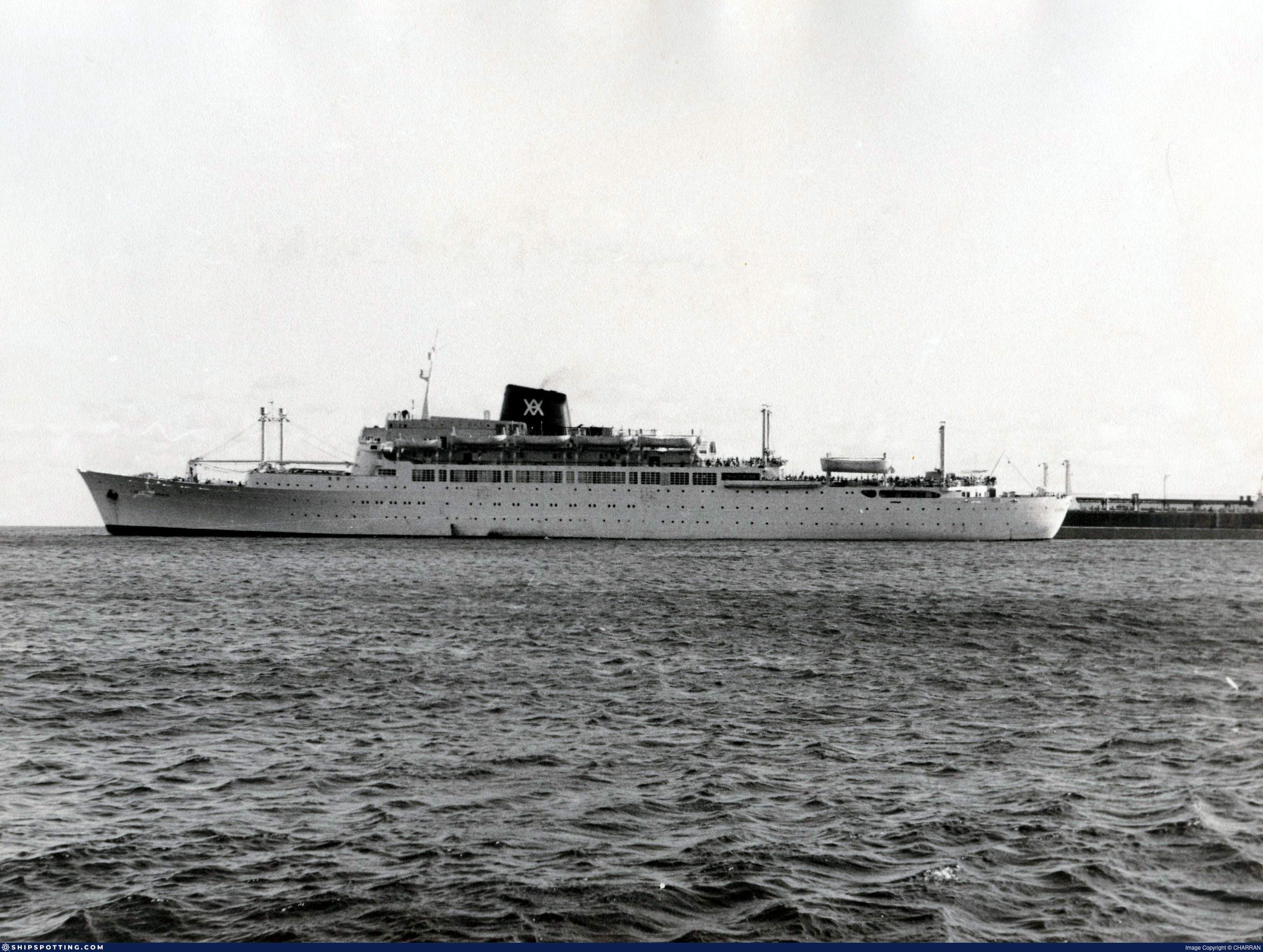

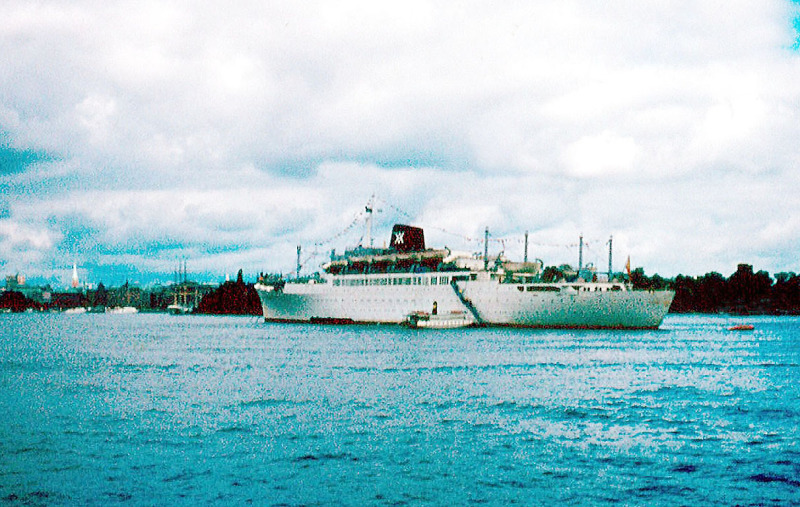
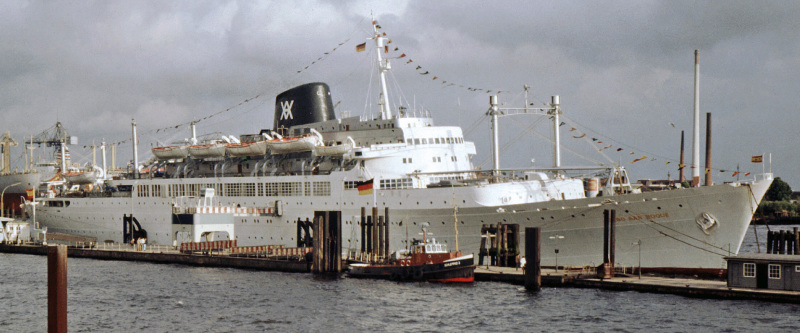
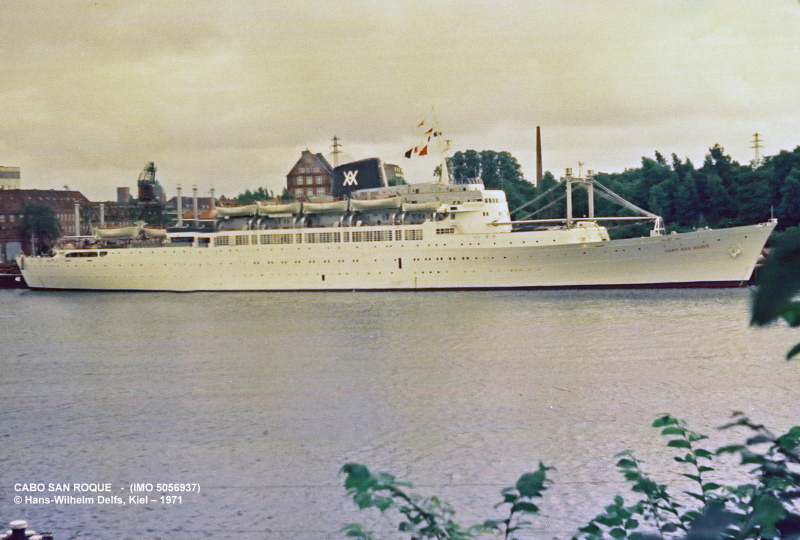
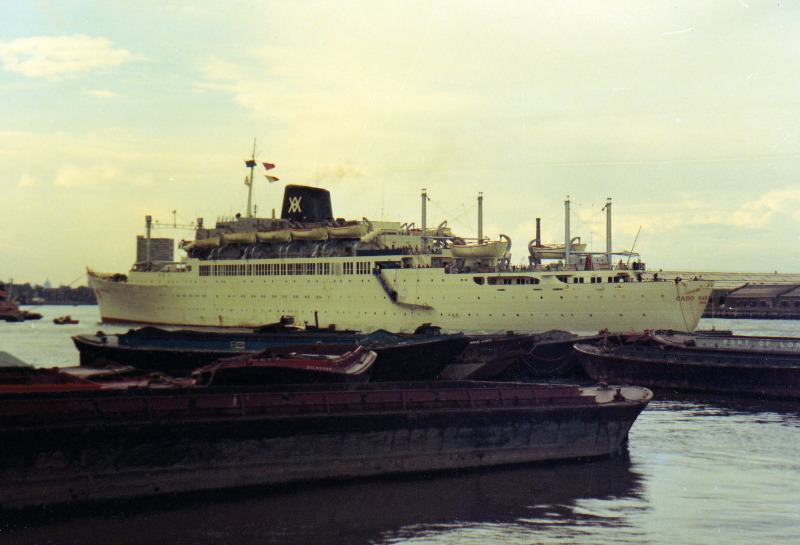
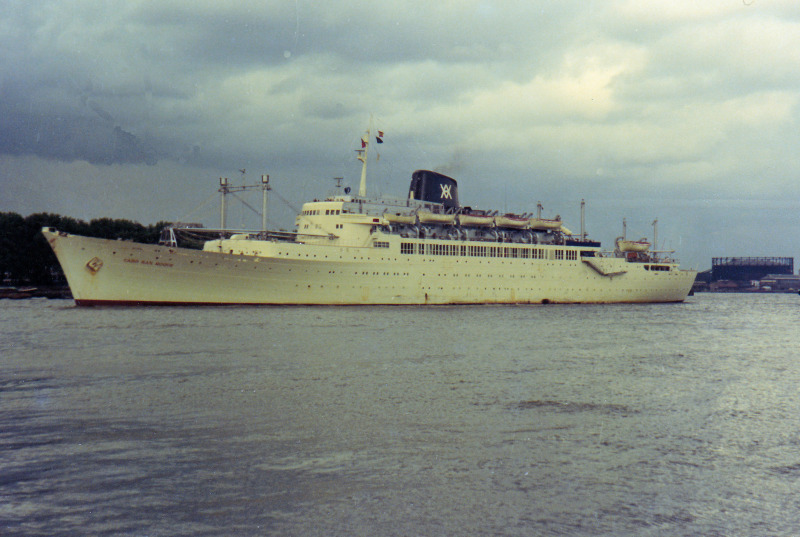
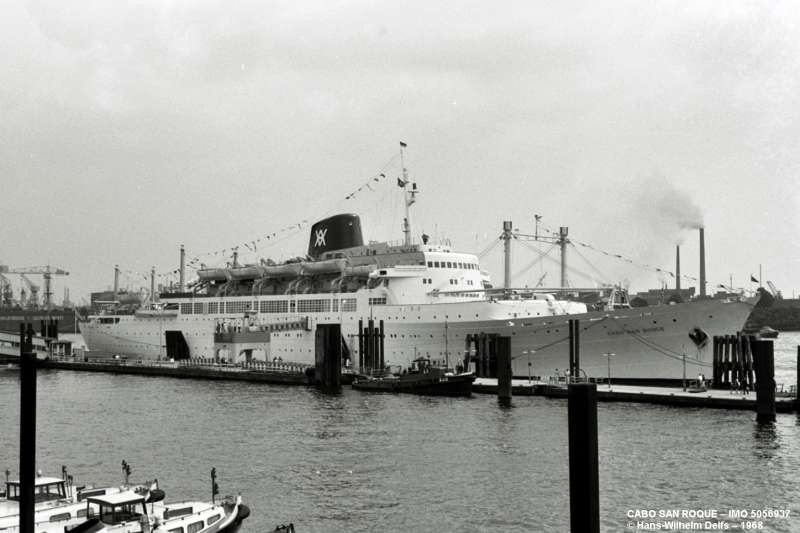
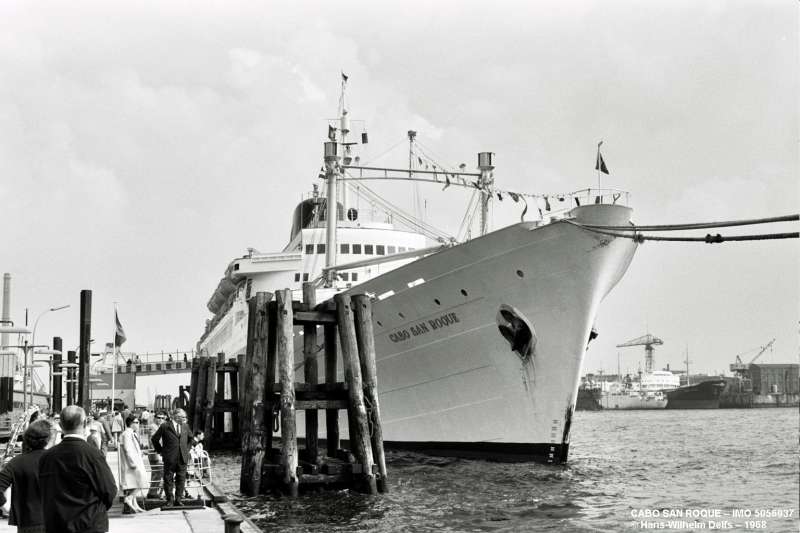
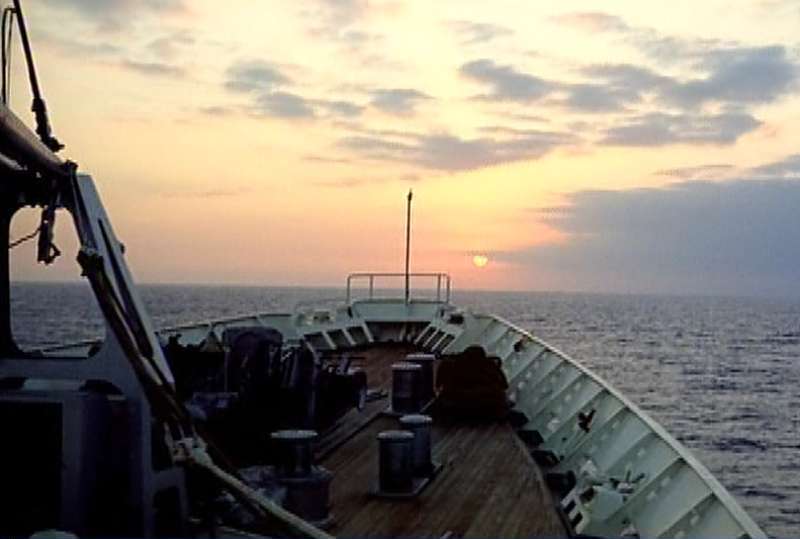


COMMENT THIS PHOTO(2)
BU Barcelona 26.7.82 (stripped at Mariel 1981) [Desguaces Cataluna]
Edit
comment
One small correction though: the AFRICA CUBA (ex-CABO SAN ROQUE) was scrapped in Barcelona in 1982, while her sister CABO SAN VICENTE became the NOOR JEHAN.
Edit
comment